Monday, September 28th 2020

NVIDIA AIC Partners Clarify RTX 3080/3090 Crash to Desktop Issues, Capacitor Choices
(UPDATE 28SEPT 16H31 GMT: Updated the MSI section with changes in the RTX 3080 Gaming X Trio store page).
Compounding the limited availability with the crash to desktop issues users have been experiencing with NVIDIA's recent RTX 3080/3090 graphics cards have led to rivers of digital ink being run on NVIDIA's latest RTX-30 series. After we've reported on NVIDIA's PG132 "Base Design" and manufacturer-specific capacitor choices and circuitry, we've now seen many of NVIDIA's AIC partners actually respond to this issue, clarifying their choices in this specific part of RTX 30-series board design, as well as the steps they've taken (if any) so as to help solve the issues (which are thus confirmed as being somewhat related to these capacitor choices, even if they are not the root cause.)Some AICs have spoken out regarding this issue, saying that their cards have no issues; others clarified that there were indeed verifiable problems in some of their early board designs due to absence of MLCC (Multilayer Ceramic Chip Capacitors), which are more capable of filtering high frequencies than POSCAPs/SP-CAPs are (although these do have some other characteristics that make them desirable for this task). NVIDIA, however, still haven't issued a statement on this issue, even though there are some reports of RTX 3080 FE cards crashing as well. Problems may arise in insufficient broadband frequency cleanup at high operating frequencies (2 GHz+) for GA-102 GPUs. These problems seem somewhat alleviated in boards featuring MLCC components on their design, though this doesn't mean they are automatically immune or that this is the root of the problem (word is running that this might be caused by overzealous Boost algorithms leading chips to error-prone operating frequencies, but there is no evidence on any of this as of yet). Partners' responses are shared after the break, organized by manufacturer.
ASUS
ASUS was one of the manufacturers to ship a fully MLCC capacitor design with their Strix Gaming OC graphics cards, and haven't issued a statement yet. The company supposedly detected problems in this area while internally testing the RTX 30-series, and chose to do away with any POSCAP/SP-CAP in their highest-tier designs.COLORFUL
The manufacturer was the first to report on an issue to the press. Review samples that had already been sent out, were later recalled.
EVGA
MSI acknowledged the issue during the MSI Insider Livestream, suggested it could be a driver issue. In our in-depth review, we found that MSI uses a single set of 10 MLCC capacitors and 5 POSCAPs/SP-CAPs in their design.UPDATE SET 28th 16H31 GMT: MSI have reportedly quietly updated their RTX 3080 Gaming X Trio product page, indicating that an engineering change has been done to their boards' design. While previously MSI's own photos of the circuitry on the back of the cards' PCSB only showed a 5x POSCAP/SP-CAP and 1x MLCC array design (you can see this exact design in our review of the MSI RTX 3080 Gaming X Trio), the new product page images now feature an updated 4x POSCAP/SP-CAP and 2x MLCC array design, exactly like the one in NVIDIA's FE. This change was done silently, and it likely means new revisions of the cards are already shipping.
I write reportedly, because when one loads up MSI's product page for the RTX 3080 Gaming X Trio, the picture of the back of the PCB is now no longer available. However, the same picture is available in the company's RTX 3090 Gaming X Trio graphics card, which already featured this 4x POSCAP/SP-CAP and 2x MLCC design. In fact, MSI has now removed the backplate photograph in all of their RTX 3080 products.ZOTAC
ZOTAC is the only AIC we've reviewed a card from who employs a full 6x POSCAP/SP-CAP solution, absent of any MLCC capacitor array. The company on Twitter said that they are investigating the issue, and promise to keep in touch with all RTX 30-series buyers who experience any issues.
Sources:
ZOTAC @ Facebook, jacob Freeman @ EVGA Forums, GALAX @ Weibo, GAINWARD @ Weibo, via Videocardz, via Videocardz
Compounding the limited availability with the crash to desktop issues users have been experiencing with NVIDIA's recent RTX 3080/3090 graphics cards have led to rivers of digital ink being run on NVIDIA's latest RTX-30 series. After we've reported on NVIDIA's PG132 "Base Design" and manufacturer-specific capacitor choices and circuitry, we've now seen many of NVIDIA's AIC partners actually respond to this issue, clarifying their choices in this specific part of RTX 30-series board design, as well as the steps they've taken (if any) so as to help solve the issues (which are thus confirmed as being somewhat related to these capacitor choices, even if they are not the root cause.)Some AICs have spoken out regarding this issue, saying that their cards have no issues; others clarified that there were indeed verifiable problems in some of their early board designs due to absence of MLCC (Multilayer Ceramic Chip Capacitors), which are more capable of filtering high frequencies than POSCAPs/SP-CAPs are (although these do have some other characteristics that make them desirable for this task). NVIDIA, however, still haven't issued a statement on this issue, even though there are some reports of RTX 3080 FE cards crashing as well. Problems may arise in insufficient broadband frequency cleanup at high operating frequencies (2 GHz+) for GA-102 GPUs. These problems seem somewhat alleviated in boards featuring MLCC components on their design, though this doesn't mean they are automatically immune or that this is the root of the problem (word is running that this might be caused by overzealous Boost algorithms leading chips to error-prone operating frequencies, but there is no evidence on any of this as of yet). Partners' responses are shared after the break, organized by manufacturer.
ASUS
ASUS was one of the manufacturers to ship a fully MLCC capacitor design with their Strix Gaming OC graphics cards, and haven't issued a statement yet. The company supposedly detected problems in this area while internally testing the RTX 30-series, and chose to do away with any POSCAP/SP-CAP in their highest-tier designs.COLORFUL
The manufacturer was the first to report on an issue to the press. Review samples that had already been sent out, were later recalled.
EVGA
Recently there has been some discussion about the EVGA GeForce RTX 3080 series.GAINWARD
During our mass production QC testing we discovered a full 6 POSCAP solution cannot pass the real world applications testing. It took almost a week of R&D effort to find the cause and reduce the POSCAPs to 4 and add 20 MLCC caps prior to shipping production boards, this is why the EVGA GeForce RTX 3080 FTW3 series was delayed at launch. There were no 6 POSCAP production EVGA GeForce RTX 3080 FTW3 boards shipped.
But, due to the time crunch, some of the reviewers were sent a pre-production version with 6 POSCAP's, we are working with those reviewers directly to replace their boards with production versions.
EVGA GeForce RTX 3080 XC3 series with 5 POSCAPs + 10 MLCC solution is matched with the XC3 spec without issues.
Also note that we have updated the product pictures at EVGA.com to reflect the production components that shipped to gamers and enthusiasts since day 1 of product launch. Once you receive the card you can compare for yourself, EVGA stands behind its products!
— Jacob Freeman, EVGA Forums
Announcement on SP-CAP Capacitors and MLCC Capacitors of Gainsun 30 Series Graphics Card ProductsGALAX
Dear Gainward consumer players:
Thanks to the friends who bought and supported Gainward. Recently, we received the voice of market players' inquiries. Many players are very concerned about our company's just released 30 series products. Regarding the specific usage of the capacitors on the back of the chip, we hereby explain the situation:
All the RTX 3080 10 GB graphics cards released by Gainward currently use 5 SP-CAP capacitors on the back of the chip and 10 MLCC capacitors. The versions currently on the market are all the original commercial versions.
All the RTX 3090 graphics cards released by Gainward currently use 4 SP-CAP capacitors on the back of the chip and 20 MLCC capacitors. The versions currently on the market are all the original commercial versions.
As a long-term AIC partner of Nvidia, Gainward has always been adhering to the product standard to design and produce completely according to Nvidia's requirements. Therefore, currently players are concerned about the problem of capacitors and new product failures on the Internet. Currently Gainward has not generated such feedback..
In addition, all Gainward graphics card products support three-year warranty and personal warranty service. Thank you consumers and players for your support and love to Gainward.
(automatic translation from Chinese)
About the SP-CAP capacitors and MLCC capacitors of GALAXY RTX 3080/3090 productsINNO3DMSI
Dear player friends:
Hello, everyone. Recently, many users have come to inquire about the specific usage of the capacitors on the back of the GALAXY RTX 3080/3090 series of graphics chips. After verification, about the RTX 3080/3090 released by GALAXY. The capacitors used on the back of the model chip are as follows:
1. GALAXY RTX 3080 Heijiang/Metal Master product, the number of SP-CAP capacitors on the back of the chip: 5, the number of MLCC capacitors: a set of 10. This version is currently on sale and is the original commercial version.
2. GALAXY RTX 3090 General/Metal Master product, the number of SP-CAP capacitors on the back of the chip: 4, the number of MLCC capacitors: two groups of 20. This version is currently on sale and is the original commercial version.
3. GALAX RTX 3090 GAMER trial production samples, currently only 6 pieces are in the hands of the media and KOL. The first batch of this sample uses 6 SP-CAP capacitors. After confirmation, the GAMER products officially produced and sold will be used for capacitor materials. Make optimization improvements. Note: This product is not currently on sale.
I am very grateful to the players and friends for their support and love to GALAXY. GALAXY is also consistent in its pursuit of product quality. It is our glorious mission to provide you with better and stronger hardware. In addition, the current full range of GALAXY graphics card products support three-year warranty and personal warranty service. If you have other doubts or questions, please feel free to leave us a message to discuss, thank you!
(automatic translation from Chinese)
MSI acknowledged the issue during the MSI Insider Livestream, suggested it could be a driver issue. In our in-depth review, we found that MSI uses a single set of 10 MLCC capacitors and 5 POSCAPs/SP-CAPs in their design.UPDATE SET 28th 16H31 GMT: MSI have reportedly quietly updated their RTX 3080 Gaming X Trio product page, indicating that an engineering change has been done to their boards' design. While previously MSI's own photos of the circuitry on the back of the cards' PCSB only showed a 5x POSCAP/SP-CAP and 1x MLCC array design (you can see this exact design in our review of the MSI RTX 3080 Gaming X Trio), the new product page images now feature an updated 4x POSCAP/SP-CAP and 2x MLCC array design, exactly like the one in NVIDIA's FE. This change was done silently, and it likely means new revisions of the cards are already shipping.
I write reportedly, because when one loads up MSI's product page for the RTX 3080 Gaming X Trio, the picture of the back of the PCB is now no longer available. However, the same picture is available in the company's RTX 3090 Gaming X Trio graphics card, which already featured this 4x POSCAP/SP-CAP and 2x MLCC design. In fact, MSI has now removed the backplate photograph in all of their RTX 3080 products.ZOTAC
ZOTAC is the only AIC we've reviewed a card from who employs a full 6x POSCAP/SP-CAP solution, absent of any MLCC capacitor array. The company on Twitter said that they are investigating the issue, and promise to keep in touch with all RTX 30-series buyers who experience any issues.

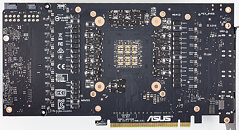
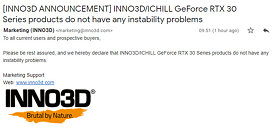
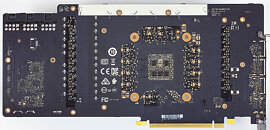
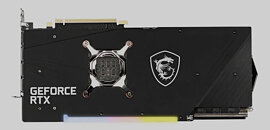
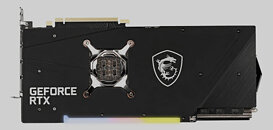
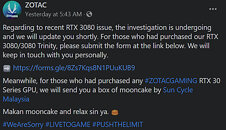
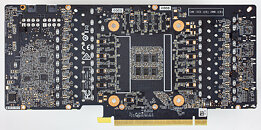
77 Comments on NVIDIA AIC Partners Clarify RTX 3080/3090 Crash to Desktop Issues, Capacitor Choices
P.O.S. capsIntel does it, Nvidia does it, AMD does it... over the past generations they have steadily been chipping away at 'our' overclocking headroom with clever boost algorithms, and they're now pushing things over the edge at times. As every overclocker knows, for 24/7 you want to nudge back one step from the maximum you can get... Seems like corporate greed doesn't really sit well with that idea. And all for single digit percentage wins over the other for the biggest epeen...
SO OBVIOUS! NOW THEY ARE SOFTENING UP PEOPLE so they will accept a new firmware with nerfed boost clocks.
Lowering performance is the only way they can fix their poor capacitor choices without taking back the GFX card.
IF YOU HAVE A 3080, RETURN IT NOW WHILE YOU HAVE A CHANCE, DO NOT ACCEPT LOWER PERFORMANCE.
Some manufacturers made poor capacitor choices to make more money, it was greed pure and simple.
Who the flock saves a couple of measly cents on a $699 card, they must be real cheap.
What I heard is that ASUS and GIGABYTE went all in even on the cheapest versions, have anyone heard of any problems with their cards?
Edit: 456.55 -> lower max boost + 10W = higher Vramp? Needs TPU/Igors test rig. PCAT is useless <100ms.
— Jacob Freeman
Oh, that's strange, why is it that I experienced the opposite, in fact, a nice middle finger. Save it, buddy, you don't, not with all your customers, not for me. Or maybe it's only some countries that take preference? :nutkick:
It can't be the fault of the AIBs, because Nvidia has to greenlight their designs and there are reports of the Founders Edition experiencing the same problems.
There are reports of cards that have not been overclocked crashing as well, it seems foolish simply to try to explain this away as a few individuals being overzealous with Afterburner.
Whilst Nvidia may not guarantee anything above 1710 MHz, they market the cards with boost, so if the "solution" requires downclocking the cards or limiting the boost, they have engaged in false advertising.
It is too soon to say what is at play here, but there are too many people jumping to Nvidia's defence: whatever happens, they are not going to come out of this smelling of roses.
Other thing that people are not realising, even if you're not overclocking your card, by default if your system is cool enough and have enough power budget your GPU will boost during certain workloads, a lot of people are reporting crashes during the Automatic GPU Boost, thats not ok, some AIB models will boost close (and over) 2ghz (as shown in @W1zzard reviews), what a mess
Just blame Furmark for blowing up the caps ! :p :kookoo::rolleyes:
-----------------Hopefully Nvidia doesnt have to go thru the false advertising bit again.
The cards are 100% stable at stock and start crashing when people are OC'ing them too much which has always been the case. I mean the beast already consumes 320W, why would you want to add 2% OC on top of that while increasing your power consumption by additional ~ 50W?
Last time I checked it took the mob half a year to accept that Navi had driver stability issues. I mean it is not like most of the vocal folks gonna go out to buy Ampere anyway so who cares.
Now this is new, but expected from Fanatic Nvidia usersI agree. Also partners cant open their mouth without Nvidia's permission
Gainward and GALAX use SP-CAP.
They are either using the terms interchangeably or they know what they're talking about.
Either way, I've updated the story so that any mention of POSCAP that's not a quoted statement now reads POSCAP/SP-CAP.
I'm pretty sure this whole situation is blown out of proportions by select few who either recklessly OC their cards either manually or by autoOC'ing them in MSI Afterburner (which uses a very simple OC'ing algorithm which cannot really guarantee stable OC) or have lousy PSUs.
Meanwhile we have two reviews from verified owners and they don't report any stability issues: www.newegg.com/evga-geforce-rtx-3080-10g-p5-3885-kr/p/N82E16814487520
Skip to 11:32
Everyone is probably mum because no one is yet 100% certain what the issue actually is.
If it's really the case NVIDIA might fix or already have fixed it in drivers. It almost looks like NVIDIA's secrecy in terms of not allowing OEMs to have the actual drivers before releasing the cards have hurt NVIDIA.
Edit: I probably couldn't buy a 3080 or 3090 if I wanted to anyways since stock is gone.